What we know today, Thursday March 3
COVID-19 cases continue to surge in South Australia following the return of school and the Fringe festival, with SA Health reporting 2307 new cases on Thursday – the highest number in five weeks.
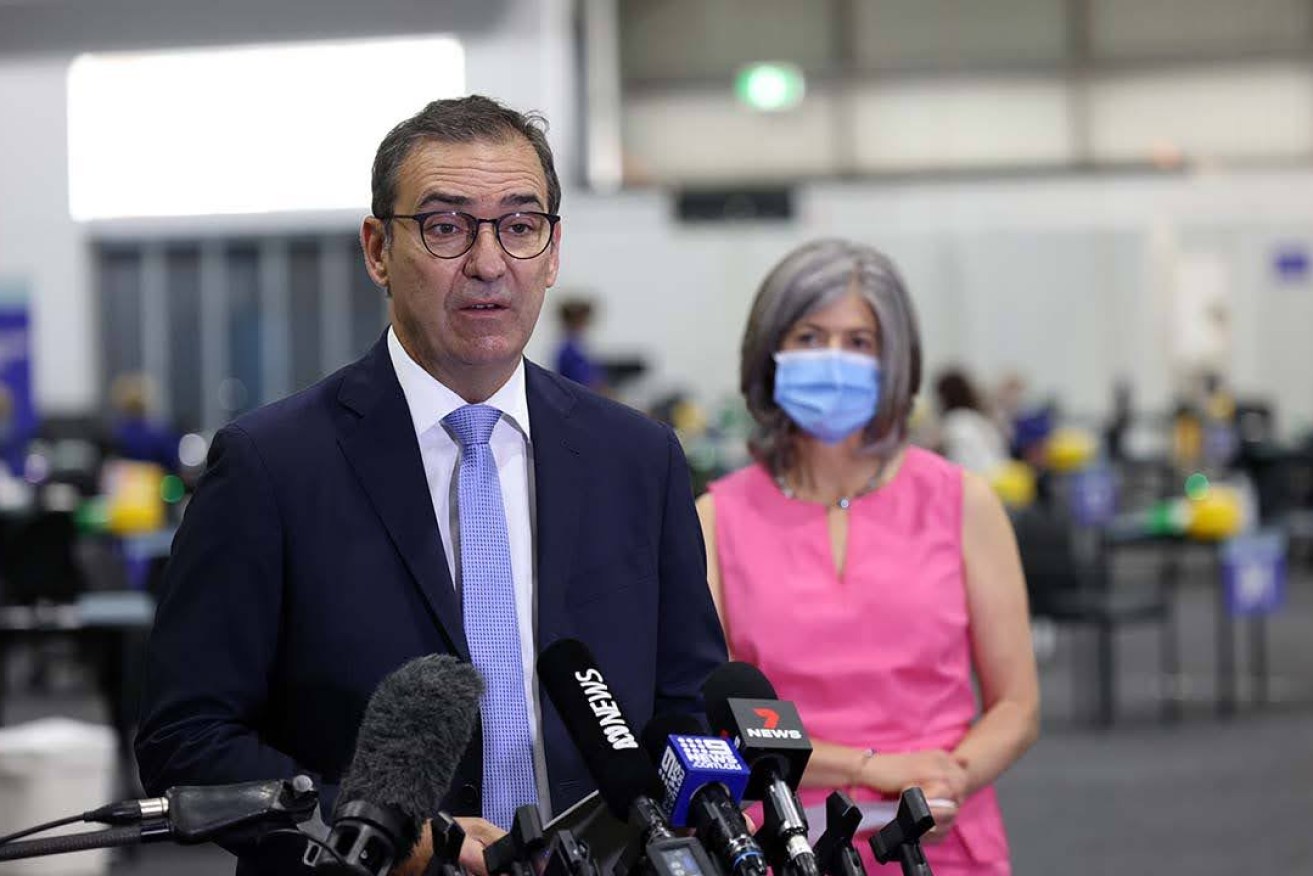
Premier Steven Marshall and chief public health officer Professor Nicola Spurrier. Photo: Tony Lewis/InDaily
- SA records another spike in COVID cases
- Half a million in NSW facing flood evacuation
- Southeast Qld hit with giant hail, ferocious storms
- TWU calls for greater SA bus safety
- Ukraine under siege as UN votes against Russia
- SA agencies mulling vax mandate extensions
- Unions raise concern about mental health service relocation in Adelaide’s northeast
- Residents told to leave as NSW floods worsen
- WA finally opens to rest of Australia
- Fitbit recalls one million watches after burns
SA records another spike in COVID cases
COVID-19 cases continue to surge in South Australia following the return of school and the Fringe festival, with SA Health reporting 2307 new cases on Thursday – the highest number in five weeks.
The last time the South Australian daily caseload was this high was January 26 when 2401 cases were reported.
In a statement this afternoon, SA Health said another five people had died after testing positive for COVID-19, including a man and woman in their 40s, a man in his 70s, a man in his 90s and a woman in her 60s.
There are 104 people with COVID-19 in hospital, including nine in intensive care and one on a ventilator.
Of those in hospital, 58 are fully-vaccinated, 22 are either unvaccinated or partially vaccinated, and 24 have an unknown vaccination status.
All up, there are 18,150 active infections in the state.
Premier Steven Marshall said there had been a recent “bump” in COVID-19 infections, but SA Health was able to handle the number of hospitalisations.
“We’re still very much within our capacity within hospitals,” he said.
“We’ve seen that remain relatively flat for an extended period of time.
“We will be looking at easing restrictions further at the end of next week and we’ve been doing it in a two-week tranche arrangement for the last six weeks.”
Marshall said authorities were yet to decide which restrictions would ease from next week.
Half a million in NSW facing flood evacuation
Around 500,000 people in NSW are now subject to an evacuation order or warning as the focus of the state’s unprecedented flood crisis moves south, with Sydney, the Hunter and the Central Coast copping a deluge.
Emergency Services Minister Steph Cooke said Greater Sydney, the Hunter and the Central Coast are all facing “treacherous weather conditions”, with the next 24 hours critical.
Premier Dominic Perrottet said the floods in the Hawkesbury region “will be worse than they were last year”.
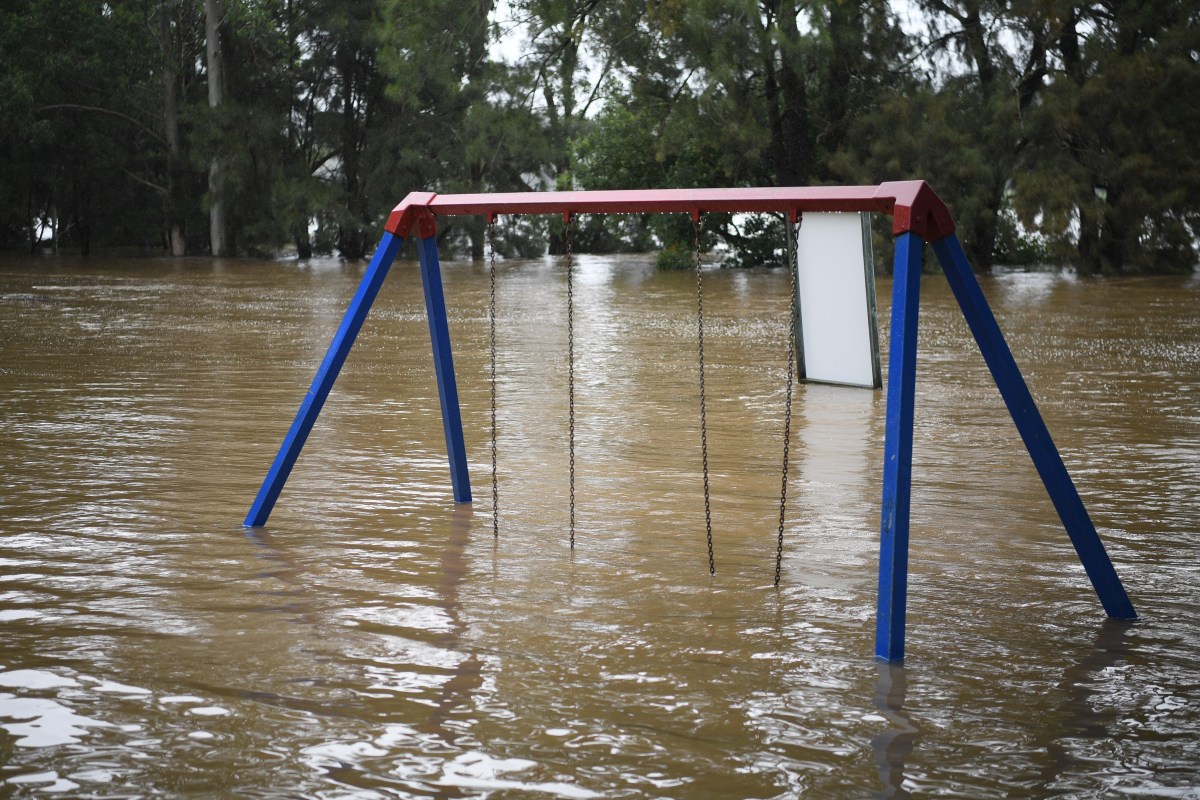
The flooded and fast flowing Nepean River in Penrith, Sydney, Thursday, March 3, 2022. Photo: Dean Lewins/AAP
Along with the washup from the destructive floods in the Northern Rivers Region the state was facing the challenge of “a battle on two fronts”, he said on Thursday.
“We do believe that things will get worse before they get better,” he said.
“But my message to you is that we will get through this.”
The Bureau of Meteorology says rainfall levels could hit a peak of 250mm and is warning of life-threatening flash flooding and damaging winds with peak gusts in excess of 90 km/h.
Major flooding is expected along the Hawkesbury and Nepean and Georges rivers, Colo and Macdonald rivers at Menangle, North Richmond, Penrith and Windsor and dozens of suburbs are on high alert.
The South Coast is also subject to a minor flood warning for the Shoalhaven and Sussex Inlet.
Perrottet said 500,000 people across the state are now subject to evacuation orders or warnings.
The State Emergency Service has issued 76 evacuation orders affecting 200,000 people and 18 evacuation warnings have been sent to nearly 300,000 people.
“If you are subject to one of those evacuation warnings, please get ready…If you are subject to one of those evacuation orders, please get out,” Perrottet said.
Tens of thousands of people living in Sydney’s west, northwest and southwestern suburbs including Windsor, North Richmond, Camden and Milperra, have been ordered to flee to safety with evacuation centres set up in suburbs including Canley Vale and Blacktown.
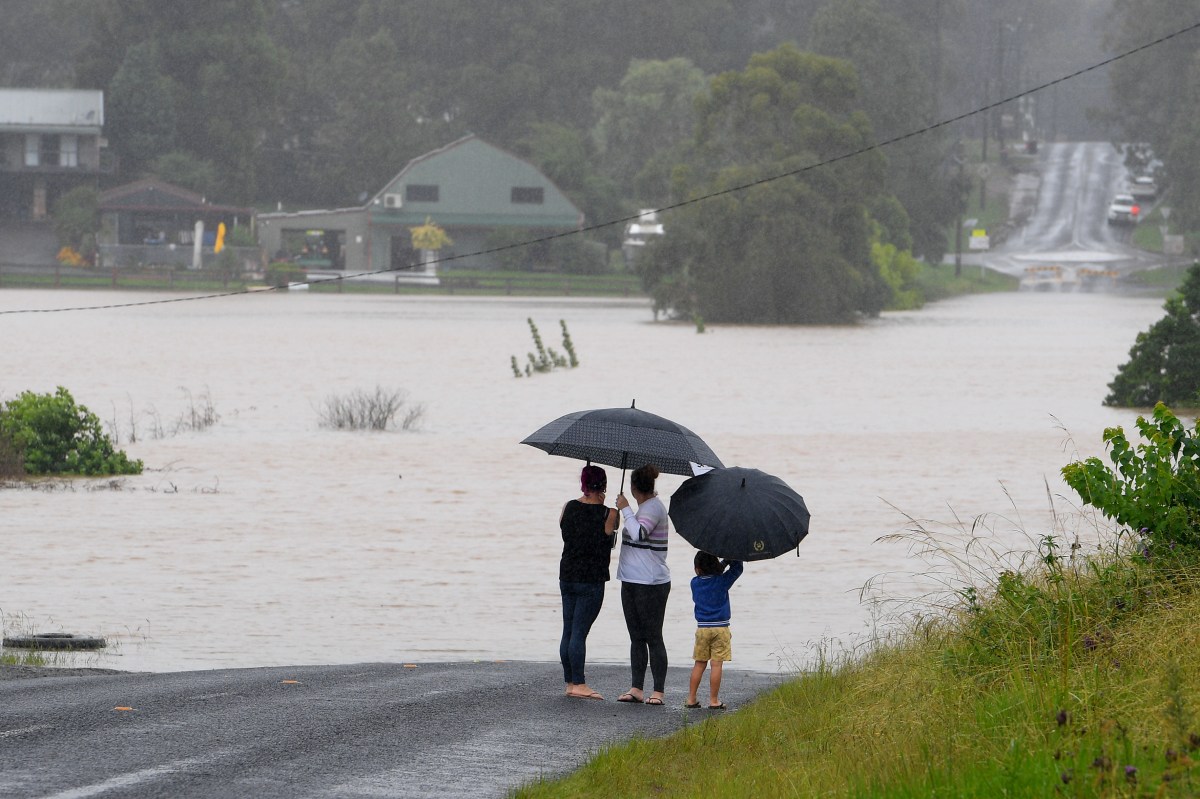
Floodwater from the swollen Hawkesbury river is seen at Windsor, north west of Sydney, Thursday, March 3, 2022. Photo: Dan Himbrechts/AAP
SES assistant Commissioner Sean Keans says the rain bomb will hit Newcastle, the Hunter, the Central Coast and Sydney, the Illawarra and the South Coast .
River levels are rising extremely fast due to the sheer volume of rain, with flood levels along the Hawkesbury-Nepean set to be worse than those which affected the area in March 2021, Keans said.
The Nepean River at Penrith will reach nine metres bringing moderate flooding, the Hawkesbury River at North Richmond will reach 15 metres bringing major flooding.
In Lismore on the north coast the clean-up continues as the death toll rises, with four fatalities confirmed in the region’s flood event so far.
The devastated town is also facing shortages of essentials such as food, fuel, fresh water and cash as ATMs run out of cash.
Two women in their 80s and a man in his 70s were found dead in their flooded homes, while another man’s body was found floating down a Lismore street.
A fifth man died on the Central Coast last Friday morning after his car was swept away in floodwaters.
Southeast Qld hit with giant hail, ferocious storms
Southeast Queensland is being smashed by dangerous thunderstorms “like a cyclone” which are packing giant hail and intense rain, which could bring more flooding.
The storms hit as residents were cleaning up the region on Thursday after the worst floods in the decade, which have killed nine people and damaged more than 17,000 homes and businesses.
Transport Minister Mark Bailey said the ferocious storms have knocked trees across the Sunshine Coast’s main train line between Caboolture and Nambour and a number of roads with about 37,000 properties without power.
“I’m in the CBD at the moment and it’s just torrential, it looks like a cyclone out there,” he told ABC Radio on Thursday.
“So it’s a pretty cruel and tough day for everyone out there who are recovering from from having their houses flooded.”
Six centimetre hail pummelled Windera, north of Brisbane, while stones from 5-6cm smashed into the southern town of Inglewood on Wednesday night and the early hours of Thursday morning.
The Bureau of Meteorology says there’s a risk of more flooding with the trough sitting over the southeast expected to dump up to 150mm on already soaked river catchments over the next three days.
“Areas of minor to major flooding may redevelop, however, peak levels are expected to be below those observed over recent days,” the forecaster said.
“There is a risk for localised flash flooding with heavy rainfall as catchments remain saturated.”
Bailey said the train system has been only partially online, and there had been plans to gradually reopen more roads, but people should stay home on Thursday due to the risk of flash flooding.
“The rain that we feared is happening, and … if you don’t need to go out, please don’t, stay off the roads, and that’s the key thing at the moment,” Bailey said.
Police are still searching for an elderly man who fell from a boat into the swollen Brisbane River near Breakfast Creek on Saturday afternoon.
TWU calls for greater SA bus safety
The Transport Workers’ Union has called on the South Australian government to do more to prevent violent attacks on Adelaide’s bus drivers.
The union says public buses have become a “hotbed of violence and abuse”.
It says in one recent attack a bus supervisor was put in a headlock and kicked repeatedly at a suburban interchange.
“Assaults against drivers are happening every day. Drivers are being abused every day,” TWU state secretary Ian Smith said.
“Physical assaults, verbal abuse, being spat on – it’s absolutely disgraceful.”
The union has urged the government to increase the police and private security presence across the network and introduce extra security at all major interchanges.
It also wants the installation of full driver protection systems, including safety screens, on all buses to protect drivers.
Premier Steven Marshall said the State Government was investing in public transport infrastructure to fix the problem.
“Obviously we’re very concerned about any assaults on public transport in South Australia, it’s why we’re significantly investing in our public transport infrastructure in South Australia,” he told reporters today.
“We’ve invested in a long-term project over the next 10 years to massively lift that amenity but also that security for people on public transport.”
Ukraine under siege as UN votes against Russia
Most of the world has lined up against Moscow in the United Nations to demand it withdraw from Ukraine, as Russian forces renewed their bombardment of the country’s second-biggest city and besieged its strategic ports.
Russia reported its military casualties for the first time since the invasion began last week, saying nearly 500 of its troops had been killed and almost 1600 wounded.
Ukraine insisted Russia’s losses were far higher but did not immediately disclose its own casualties.
The UN General Assembly voted overnight to demand that Russia stop its offensive and immediately withdraw all troops.
The vote was 141 to 5, with 35 abstentions. It came after the 193-member assembly convened its first emergency session since 1997.
Countries that spoke up for Russia included Belarus, Cuba, North Korea and Syria.
China, Iraq, India and Iran were among those that abstained.
Assembly resolutions aren’t legally binding, but they do have clout in reflecting international opinion.
Meanwhile, Russia pounded Kharkiv – Ukraine’s second-largest city with a population of around 1.5 million people – with another round of aerial attacks that shattered buildings and lit up the skyline with balls of fire.
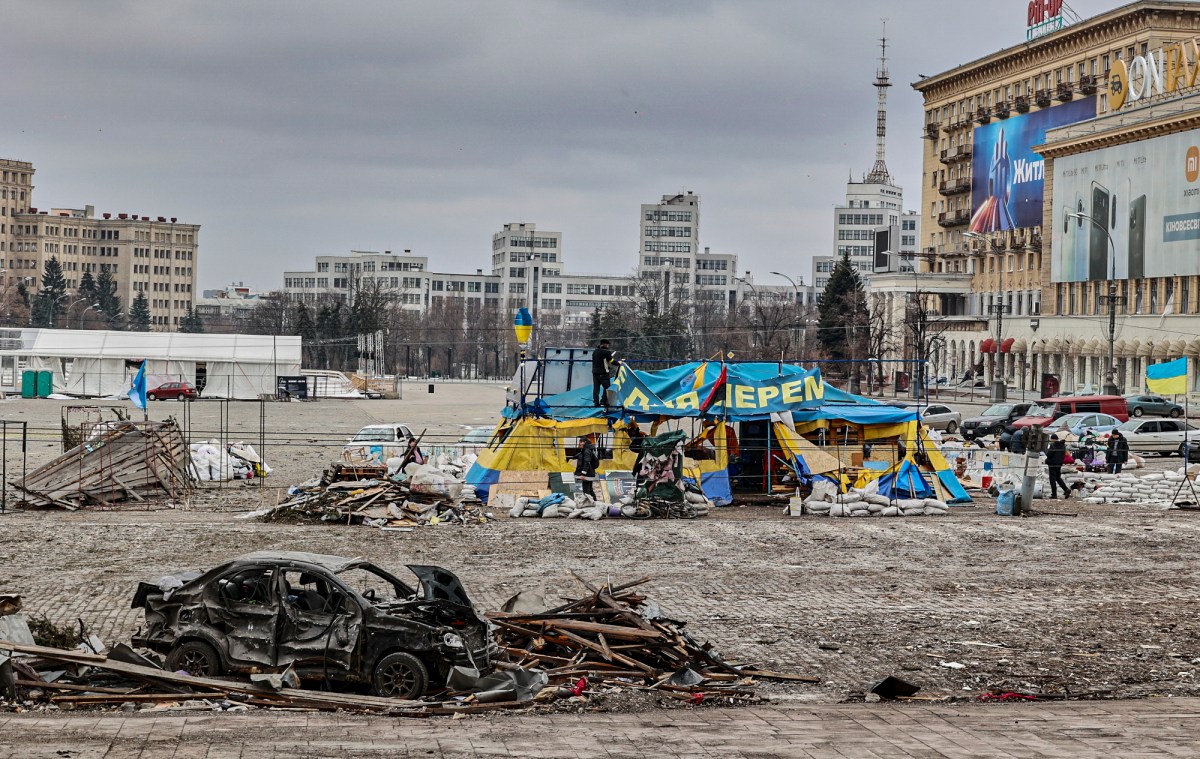
People clear the rubble outside the damaged Kharkiv regional administration building in the aftermath of a shelling. Photo: Sergey Kozlov/EPA
At least 21 people were killed and 112 injured over the past day, according to Oleg Sinehubov, head of the Kharkiv regional administration.
Arestovich said several Russian planes were shot down over Kharkiv, though that could not be confirmed.
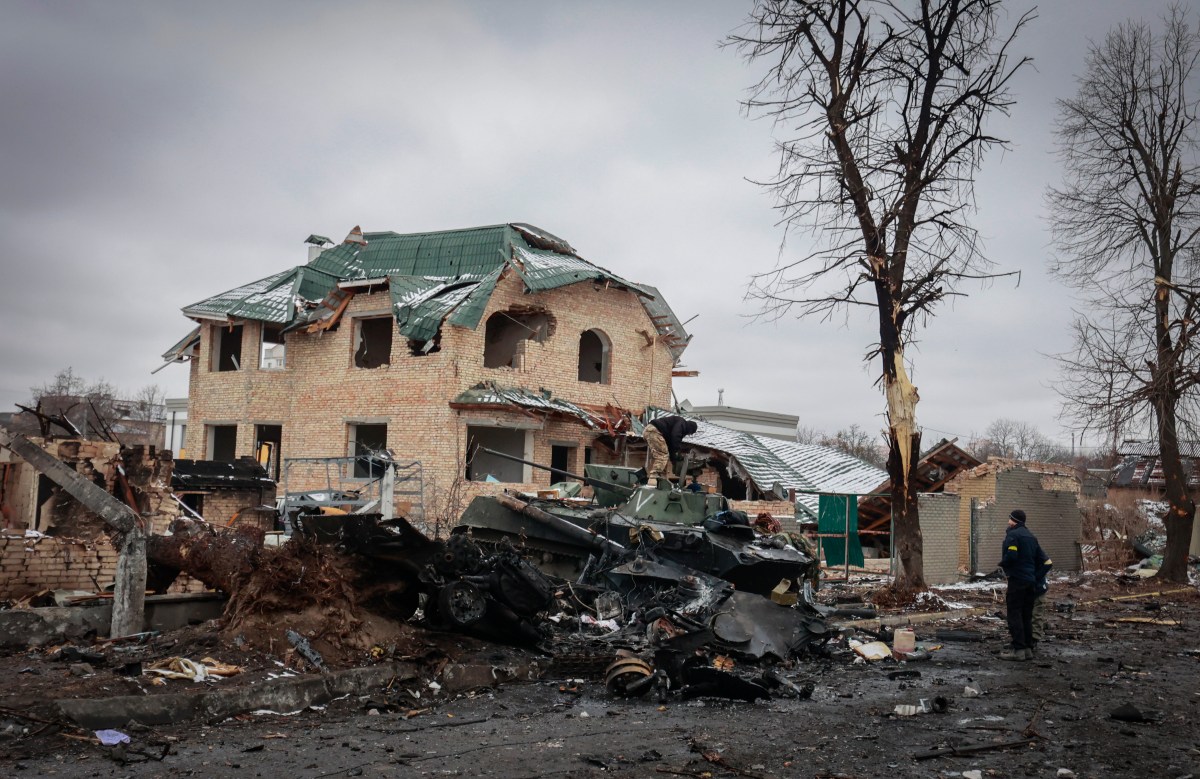
A man looks at the gutted remains of Russian military vehicles on a road in the town of Bucha, close to the capital Kyiv, Tuesday, March 1, 2022. Photo: Serhii Nuzhnenko/AP
“Kharkiv today is the Stalingrad of the 21st century,” said Oleksiy Arestovich, a top presidential adviser.
But both sides said they were also ready to resume talks aimed at stopping the fighting, which had Ukraine under threat on multiple fronts.
SA agencies mulling vax mandate extensions
Government agencies including SA Health and the Education Department are considering what legislative levers they can pull to maintain their COVID-19 vaccine mandates once the major emergency declaration ends, state coordinator Grant Stevens says.
The police commissioner told reporters yesterday afternoon that vaccine mandates issued under South Australia’s Emergency Management Act would become “void” once the legislation lapses – potentially as soon as next month.
He said SA Police was liaising with government agencies such as SA Health and the Education Department to figure out how they could maintain their workplace vaccine mandates once the major emergency declaration ends.
“The reality is that when the declaration ceases – when it’s either revoked or is not extended – all of the directions that are issued under that declaration become void,” he said.
“If there is a workforce or a sector within the South Australian community that believes it’s necessary for their employees to be vaccinated, they’ll have to consider what other options are available to them – whether it be a management direction or industrial laws, or work health and safety legislation.
“It won’t be under a direction issued under the Emergency Management Act.”
Asked if that work was underway by agencies such as SA Health or the Department for Education, Stevens said: “I would expect so, yes”.
“My team is liaising with different sectors that are utilising mandates for their workforce at this point in time and that work is ongoing.”
It comes as the number of new COVID-19 infections in South Australia yesterday spiked to 2075 – the highest number since January 26, when 2401 cases were reported.
A man in his 50s and a man in his 70s who tested positive for COVID-19 died, while the number of people in hospital increased to 112 – 64 of whom were fully vaccinated.
Stevens said authorities were “closely watching” COVID-19 hospitalisation and case numbers to determine when to lift the emergency management declaration.
He said he recommended a further 28-day extension to the declaration, which would allow him to exercise powers during the state election so that those in quarantine could vote.
“This is a live consideration for us in relation to when the appropriate time will be to lift that major emergency declaration (but) I don’t think that time is now,” he said.
“It’s possible that this current application for an extension may be the last one, but we’ll have to assess the circumstances as we move through the next 28-day period.”
– Stephanie Richards
Unions raise concern about mental health service relocation in Adelaide’s northeast
South Australia’s health unions say a critical forensic mental health service at the former Oakden site is being relocated to a new location which is not clinically appropriate and puts patient safety at risk.
The Oakden-based Howard House outpatient treatment facility for forensic mental health patients has been sold to developers, according to the South Australian Salaried Medical Officers Association and the Australian Nursing and Midwifery Association, with the service told to vacate by March 29.
SASMOA, the ANMF and the Public Service Association say SA Health is proposing to relocate the service into existing facilities at James Nash House – a high security forensic psychiatric facility – and the North East Community Mental Health Service.
The unions say there is now a potential for high-risk mental health patients to come into contact with elderly or general mental health patients, or victims of offending to come into contact with their offenders.
SASMOA chief industrial officer Bernadette Mulholland called for the services to remain at Howard House until an alternative is found.
“It beggars belief that NALHN (Northern Adelaide Local Health Network) and SA Health have had this long to plan an alternative for these important services and they have come up with a completely inappropriate plan,” she said in a statement.
“The alternative being put forward by the employer is simply not clinically appropriate. It presents safety issues for both patients – who are in the high-risk category – and the community.”
A spokesperson for NALHN said no final decision has been made.
“Consultation is currently underway with staff and industrial bodies regarding the potential relocation of a small group of staff from Howard House to other mental health sites within NALHN,” the spokesperson said.
“Any issues raised throughout the consultation process are [to] be considered.
“This proposal to relocate staff does not include a reduction in the number of staff or closure of any services delivered by NALHN.”
WA finally opens to rest of Australia
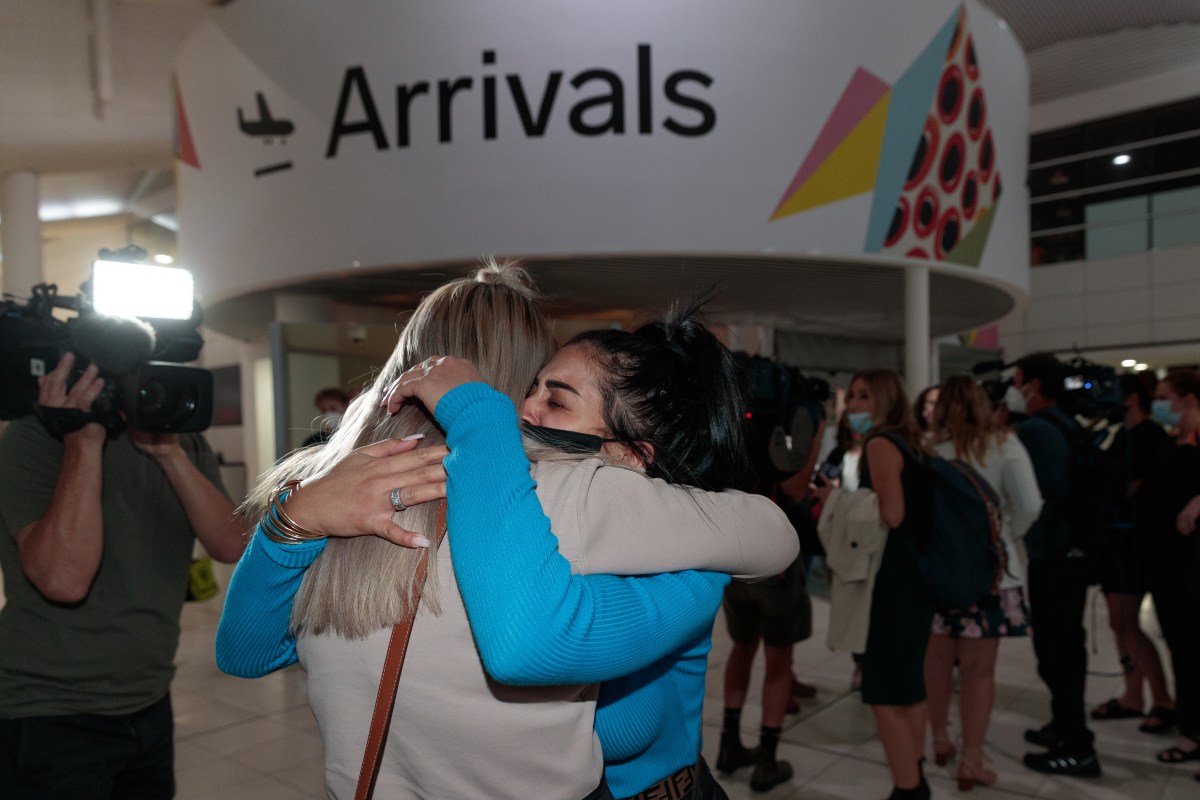
Passengers arrive at Perth Domestic Airport overnight after WA’s border reopened to Australia. Photo: Richard Wainwright/AAP
The arrivals hall at Perth airport was filled with joy and hugs after midnight when the first interstate planes to take advantage of Western Australia’s border reopening landed.
After spending almost 700 days behind a hard border during the coronavirus pandemic, WA is finally welcoming vaccinated travellers.
About 5000 people will arrive on Thursday across 22 domestic flights and five international flights and tens of thousands are expected to follow in the coming weeks.
WA has been closed to South Australia since Friday, December 3.
The first flight to hit the ground after midnight was a Qantas ‘red eye’ from Sydney.
Jubilant scenes lifted the domestic arrivals hall as the passengers entered the baggage collection area to be greeted by family and friends.
One of the travellers was federal Opposition Leader Anthony Albanese, who will be campaigning in the seats of Pearce and Hasluck from Thursday to Saturday.
Prime Minister Scott Morrison was also expected to visit WA after the border came down but is isolating in Sydney as he recovers from COVID-19.
WA is the last jurisdiction in Australia to open its border to air travellers but there are some restrictions, including a requirement to be triple vaccinated and complete a travel entry pass.
“Australia is now finally back together,” Qantas CEO Alan Joyce said.
“This day has been a long time coming.
“It will be an emotional day for those reuniting with loved ones.”
Premier Mark McGowan originally planned to reopen in February but this was delayed due to the spread of the Omicron variant of COVID-19 within Australia over the summer.
WA Police Commissioner Chris Dawson said he expected an influx of travellers after almost 23,000 travel applications were received by Wednesday morning.
Fitbit recalls one million watches after burns
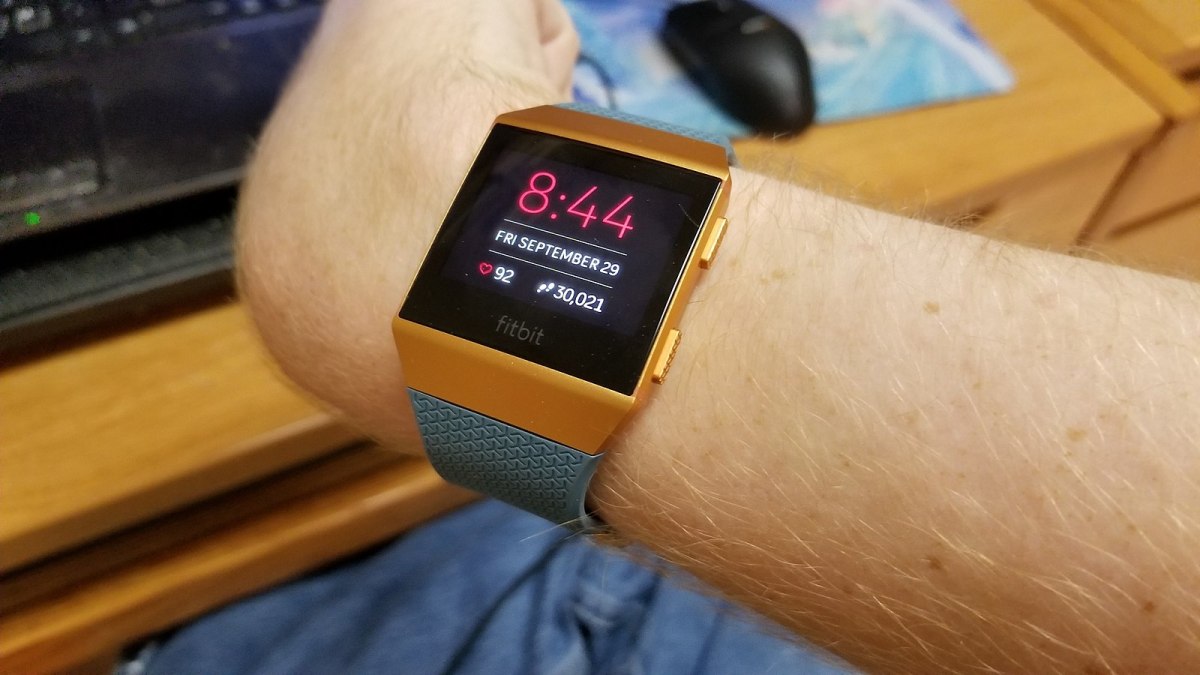
The Fitbit Ionic has been recalled due to safety concerns. Photo: DReifGalaxyM31/Wikmedia Commons
Google-owned Fitbit has recalled one million of its Ionic smartwatches after dozens of users reported burn injuries as a result of the battery overheating.
The fitness gadget maker said anyone who bought the $US299 ($A411) watch with the model number FB503 should immediately stop using the product and contact Fitbit for packaging to return it.
Customers will receive a full refund and a discount of 40 per cent to purchase certain Fitbit products, the company said.
Fitbit received 115 reports of the battery overheating in the US, with 78 reports of burn injuries including two reports of third-degree burns and four claims of second-degree burns.
There were 40 reports of burn injuries internationally.
Fitbit, based in San Francisco, introduced the Ionic watches in 2017 and stopped producing them in 2020.
Google completed its $US2.1 billion ($A2.9 billion) acquisition of Fitbit last year, which raised concerns about privacy.
– With AAP, The New Daily and Reuters




